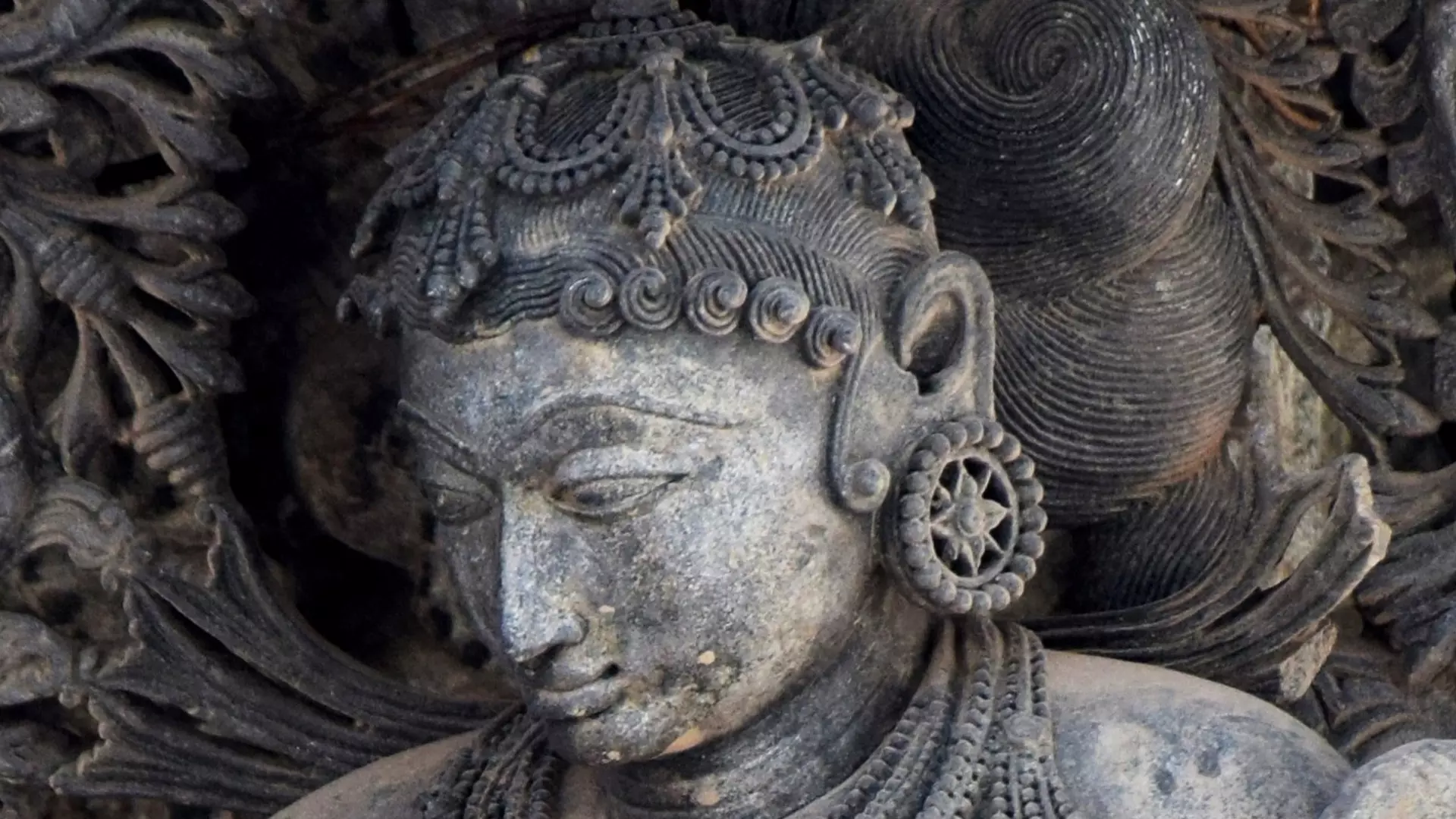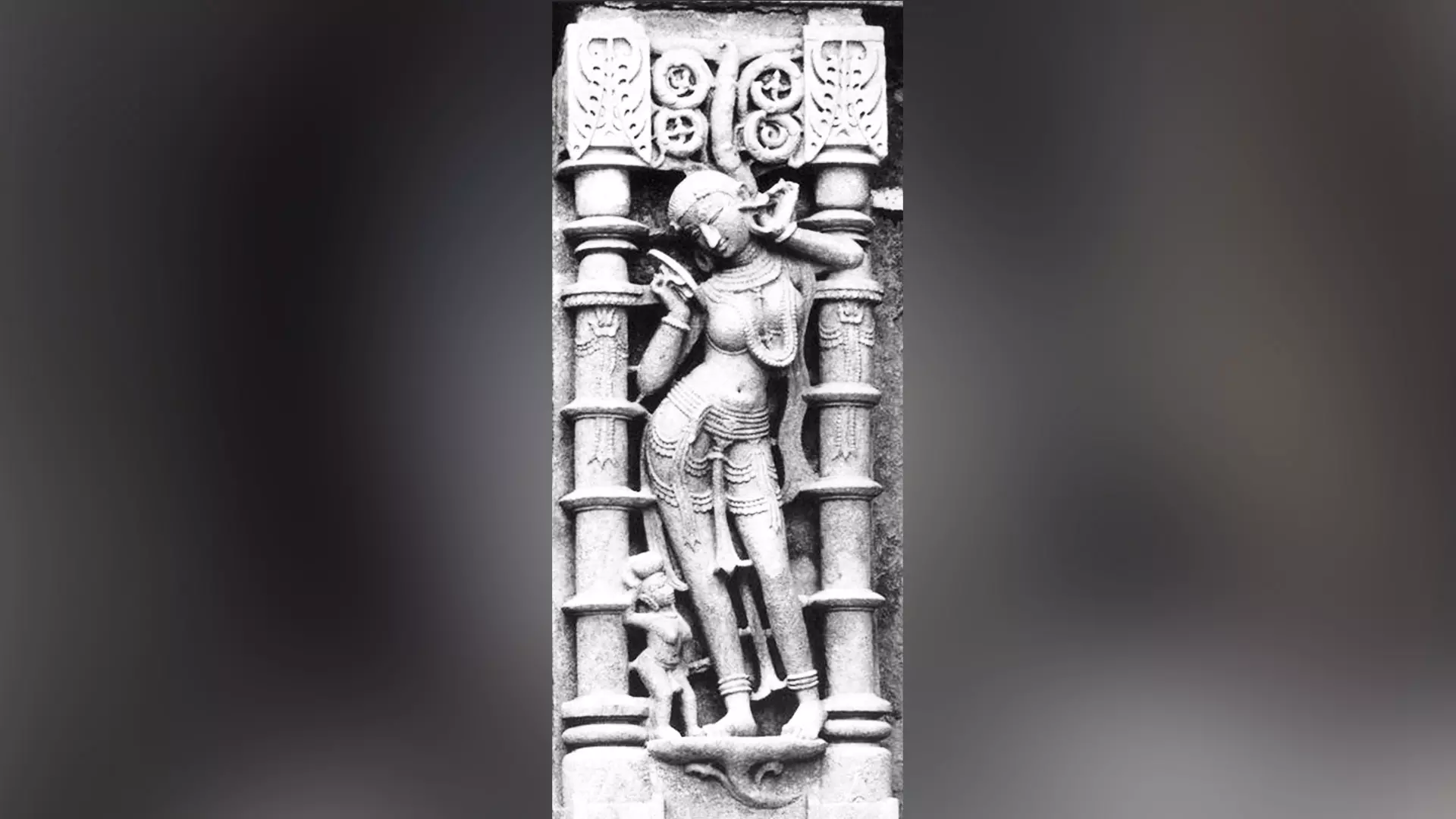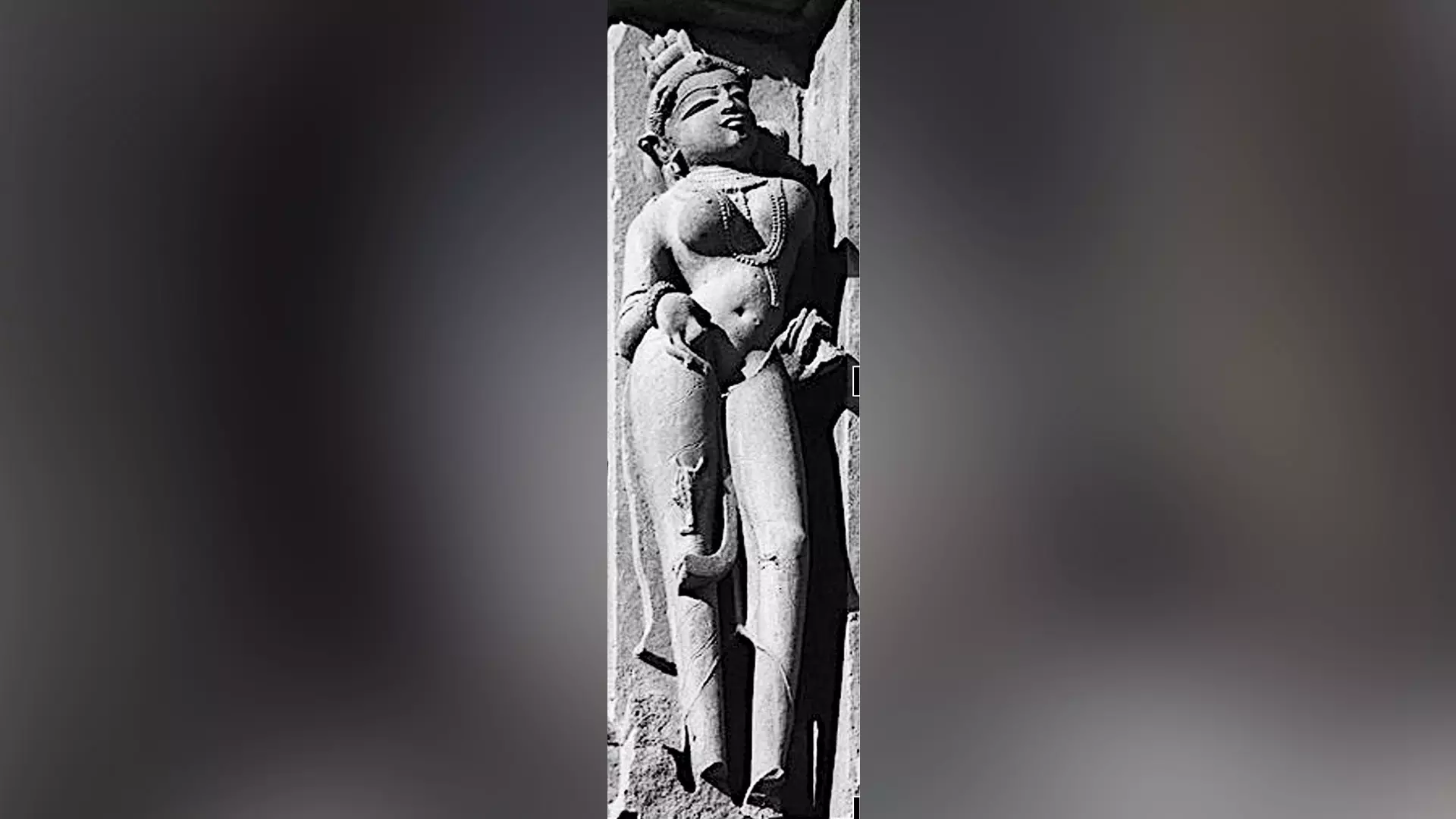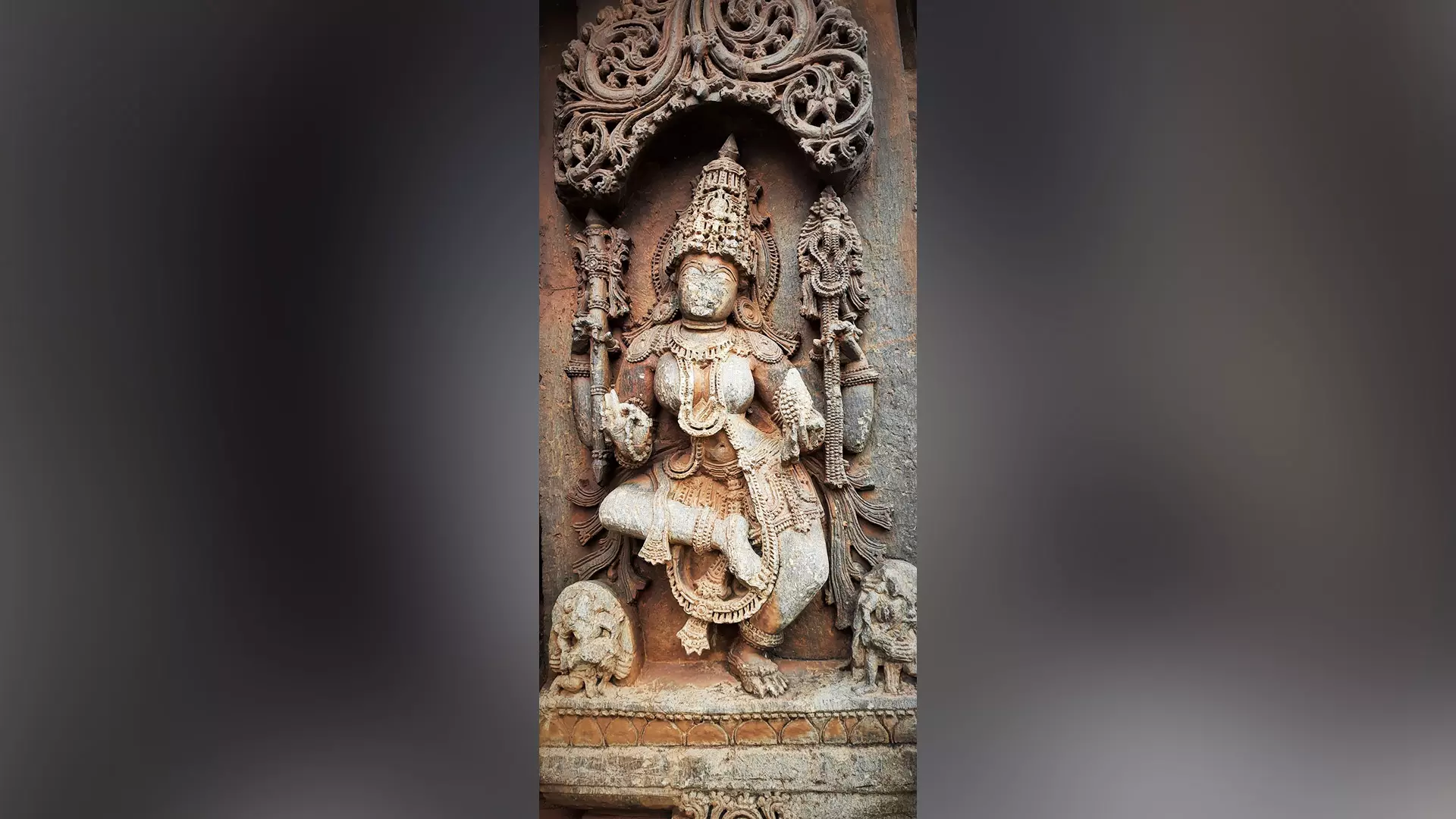
- Home
- India
- World
- Premium
- THE FEDERAL SPECIAL
- Analysis
- States
- Perspective
- Videos
- Sports
- Education
- Entertainment
- Elections
- Features
- Health
- Business
- Series
- In memoriam: Sheikh Mujibur Rahman
- Bishnoi's Men
- NEET TANGLE
- Economy Series
- Earth Day
- Kashmir’s Frozen Turbulence
- India@75
- The legend of Ramjanmabhoomi
- Liberalisation@30
- How to tame a dragon
- Celebrating biodiversity
- Farm Matters
- 50 days of solitude
- Bringing Migrants Home
- Budget 2020
- Jharkhand Votes
- The Federal Investigates
- The Federal Impact
- Vanishing Sand
- Gandhi @ 150
- Andhra Today
- Field report
- Operation Gulmarg
- Pandemic @1 Mn in India
- The Federal Year-End
- The Zero Year
- Science
- Brand studio
- Newsletter
- Elections 2024
- Events
Why the role of non-divine female figures in the temples of mediaeval era remains forgotten

Sculptures play an important role in the traditional architecture of India. If you look at the sculptures found across the heritage sites, temples and monuments, you will see that they are closely linked to the social and cultural life of people of a particular region and time. The mediaeval period (700 AD to 1400 AD) witnessed a wide range of activities related to the construction...
Sculptures play an important role in the traditional architecture of India. If you look at the sculptures found across the heritage sites, temples and monuments, you will see that they are closely linked to the social and cultural life of people of a particular region and time. The mediaeval period (700 AD to 1400 AD) witnessed a wide range of activities related to the construction and preservation of temples and monuments in today’s India. With a great sense of creative and aesthetic energy, the artists produced a huge range of sculptures of different sizes and shapes during this period, and this surge contributed immensely to the field of art and architecture of the mediaeval period.
When the scholars mostly prefer famous divine sculptures of mediaeval India found across the temples and monuments to conduct their studies, a huge array of non-divine sculptures of women of the same places remain in the dark despite having great aesthetic values. The non-divine sculptures of women during the mediaeval period, according to indologist Rekha Rao, show their rich and diverse roles over the ages, highlighting their presence in the cultural, spiritual and secular realms.

Curls on forehead and curling creepers in Hoysala art.
“Celebrated as models of beauty and fertility, these female figures were an integral part of Indian temple architecture,” she said. There is a sculpture of an apsara inside Rani Ki Vav, a 11th century stepwell situated in Patan in Gujarat, looking into the mirror and demonstrating the acupoint near the ear on the face. “With an acu-tool, she is activating the facial point where several nerves of the face are located. This easy treatment brings lustre on the face, facial skin turns smooth and shiny, brightens the eyes, reduces the wrinkles and premature greying of the hair. Activating this jaw acu-point increases circulation of blood and also helps in reducing problems related to pain in the jaws,” said Rekha, author of The Glory of Hoysala Queens: Belur Chennakeshava Temple and Ayurveda in Indian Temples: Depiction of Herbal Medicines through Apsaras and Shalabhanjikas among others.
The term “Devadasi” refers to a system of religious practice of dedicating a young girl before puberty to be the bride of the deity, a practice prevalent in ancient India. Devadasis were later groomed in temples as the lead dancer, Patra, and expected to perform religious rituals and offer dance and music recitals as part of worship. In ancient times, according to Rekha, the devadasis were divided into seven categories – Dutta (gifted to god), Hruta (abducted and deserted), Bhrutya (servant), Alankara (for decoration and aesthetics), Gopika, Rudraganika (the protectors, or defenders) and Vikrita (affected with passions).

The sculpture of an apsara inside Rani Ki Vav, an 11th century stepwell, situated in Gujarat's Patan.
Even though the devasadi sculptures were called apsaras, they are not the celestial mythological apsaras mentioned in the puranas. In the mediaeval temple art, you can see a strong sense of amalgamation of Nadya Shatra and Shilpa Shastra. While immortal devine figures appeared with their respective vahana (vehicle or carrier), multiple heads and hands, episodes of granting boons and advises, the non-devine figures appeared without any accessories. “While men appeared with masculine features of the warriors and kings, the women appeared as if they were engaged in socio-cultural activities. They were young with slender waists. They had large eyes and beautiful lips. Depiction of such nude women in the temples symbolised fertility. They were not intended to be erotic. And such figures with exposed breasts enhanced the aesthetics of the temple,” said Rekha, while speaking on “Representation of non-divine female figures in mediaeval temples,” as part of the monthly lecture organised by the Chennai-based Tamil Heritage Trust recently.
Rekha said some Devadasi girls who could not perform music or dance were obliged or forced to lead a life catering to the sexual needs of temple patrons or village heads. “Even this category of devadasi was carved in temples categorised as erotic figures. However, one can’t see the display of attendant instrumentalists in their figures. Their common representations were a motif of a scorpion approaching their sex organ or a monkey trying to disrobe the woman, hinting at lust and a restless mind. This led to the term vikrita devadasi being used to describe devadasis who were involved in sex work,” she said. Even though vikrita devadasi did not enjoy a good status like a temple dancer, they were a wanted part of society, a reason why they found places in the mind of ancient sculptors.

A Vikrita Devadasi with the symbol of a scorpion.
Scholars feel that the identities of women in present-day India have undergone significant transformations. Representations of women from Mohenjo-daro and Lothal (2500 -1500 BCE) are earthly, and functional. At other sites, such as Zhob, Mehrgarh, Nausharo, and Mudnigak they are portrayed as half emerging from the ground representing the Earth Goddess. “Since women played a central role in agricultural societies, in planting and reaping crops, as well as being a mother they were revered as Earth Goddesses of chthonic character. The idea that women assist the earth in its productivity can be found in later Mauryan art period in the voluptuous figure of vrksadevata or salabhanjika on the gateway of the Sanchi mahastupa. Her association with a fruiting tree suggests the notion of abundance and fruitfulness. The woman and tree motif became a popular feminine motif in Indian architectural sculpture for the next 2000 years,” writes Nalini Rao, professor of world art at the Soka University of America, California in her research paper titled Identities of women in Indian art and history, published in the Journal of the South Asian Studies Association.

Many female sculptures depicted in Hoysala art hold a citron fruit called Matulunga, meaning fruit filled with seeds to express fertility and prosperity.
True, the tradition of feminine motif continued even in the mediaeval period. Rekha said many sculptures of gods in the Hoysala style of art hold a citron fruit called Matulunga or Bijapuraka, meaning fruit filled with seeds to express fertility and prosperity. “Citron is a large fragrant citrus fruit with a thick rind. Bijapuraka is one of the original citrus fruits from which all other citrus types developed. Scholars and researchers can shed more light on what precisely is the accessory held in hand by studying more sculptures of this accessory in hand,” she added.
We have been maintaining a great tradition of kesa-vinyas (beautification of hair) from the time of the Indus Valley Civilization. From the neatly tied hair of ‘Dancing Girl’ and trimmed beard and hair of ‘Priest Head’ (Harappan period), we have come across a number of sculpture with a wide range of hair-sytle such as Didar Ganj Yakshi with a loose bun at the nape (Mauryan), Salabhanjika with fan-shaped hair of (Sunga), head of Parvati with intricate curls (Gupta period), lady with a long neat braid (Nayak). Many hair styles that we see today are rooted in our tradition, thanks to ancient dynasties like Maury, Satavahana, Gupta, Pandya, Chola, Hoysala and Vijayanagara. If you think the creation of tufts and twists is new, then you are wrong. The Sangam literature mentions women who had divided their hair into five parts, plaited separately, and tied up five tufts allowing the ends to sling down the back in a graceful manner. The hair styles depicted in the sculptures of non-devine women at the Chennakeshava temple in Belur show how kesa-vinyas is an art in itself. “The ringlets of curls on the forehead were styled initially. The long curly hair was then groomed, twisted, and tied into three or four buns making an elaborate hair-style called Kavari and then decorated with flowers and ornaments. The sculptures of the Hoysala period show various stages of styling. The expert sculptors enhanced the intricacy in carvings using their imagination and skill to make carvings in stone more interesting,” said Rekha.
With a vibrant body of work spanning centuries, the sculptors of the mediaeval period were able to give a unique identity to Indian temple art and architecture. How did they produce such a huge body of work? “The sculptors had a perfect understanding about human anatomy. They had great knowledge when it came to subjects like art, music, dance, Purana, Ayurveda, Yoga with special skills in the fields of geology and engineering,” she added.
